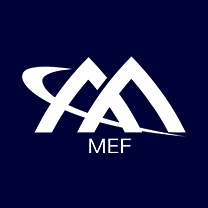
on Posted on Reading Time: 4 minutes
MEF spoke with Mark Abolafia, Senior Vice President of Business Development and Global Channel Partner Program at Intraway to learn how Intraway’s efforts in service orchestration can help advance digital transformation.
MEF: Welcome, Mark. Please tell us about yourself and Intraway. What makes your approach to service orchestration unique in the service provider marketplace?
Mark Abolafia: Sure, thank you for having me. My role is SVP of Business Development and Global Channel Partner Program at Intraway. I also handle our Marketing at the company. I have been with Intraway for 18 months and have over 30 years of experience in the telecom and technology industry, including managing a systems integration company and various consulting practices along the way.
Intraway is a leading company in the OSS market, and our primary product is Symphonica. Symphonica is a no-code, cloud-native, SaaS subscription-based platform that provides workflow, provisioning, and service activation capabilities for end-to-end orchestration. It enables businesses to connect any BSS to any networking technology using a graphical user interface and configurable connectors. Our platform stands out because it does not rely on Tosca and Yang models, which allows us to bring our customers to market much faster compared to other platforms. It offers simplicity, faster time to market, and cost-effectiveness by not requiring as highly skilled software engineers for implementation and changes from an operational standpoint.
MEF: Does this mean that your platform can be managed outside the technical domain and be closer to the business serving customers?
MA: Absolutely. While our primary market is telecom, we are also involved in the IoT space. Symphonica’s capabilities align well with activating devices on the network and provisioning services such as 5G slices for IoT devices or gateways. In terms of business orientation, our workflow capability and API gateway allow us to interact with non-MEF/TMF compliant interfaces through REST APIs. This provides flexibility to integrate with various business processes and systems, including compatibility with ServiceNow’s IT Service Management Platform. We aim to unify the business and operations side of IT.
MEF: Regarding your go-to-market strategy, are you focused on Tier One telcos, or are you targeting service providers of all sizes?
MA: Our platform is scalable and can accommodate businesses of any size. We market to Tier Ones, Tier Twos, Tier Threes, and even new entrants in the market. In fact, we have had great success with Greenfield businesses where we provide the key provisioning engine to build a BSS/OSS platform from scratch. Our subscription model and scalable cloud-based platform allow us to serve businesses of any size.
MEF: In your channel-focused model, do you assist your partners in selling to enterprises through a sell-to-sell-through approach? Or do you exclusively work with service providers and let them handle the enterprise clients?
MA: Our primary focus is on the telecom providers as they are typically the ones delivering new solutions to enterprises. The enterprises may not necessarily see Symphonica behind the scenes, but they perceive Provider A, B, or C delivering the services we provision. For Partners, we support their efforts in selling the required solutions totheir clientele, leveraging their direct relationships. We also have a dedicated product evangelist and solution engineering team to support our channel partners in their efforts.
MEF: In terms of MEF’s work and innovation, are there any particular areas that have caught your attention?
MA: Looking at Sonata and other East-West oriented interfaces, since we’re in the LSO “SOF” layer, we haven’t been involved in that aspect of it. But Legato is most closely mapped to TMF 641, which is the service order interface or API. That is our primary input, where we receive information from the northbound. So, to the extent that Legato mirrors, maps, or complements what 641 does, that is what drives our interest. The ability to take the best of all worlds or map one to the other allows our clients to standardize or select which world they want to be part of. In an API-driven world, it doesn’t matter if it’s MEF or TM Forum, as long as it gets the job done and there’s communication between the two standards bodies and the folks building these standards and using them. Like I said, in an API-driven world, it doesn’t make much of a difference where we’re concerned because as long as we can get that information and decompose it across our Service Order Manager, then it’s all good.
MEF: How important do you think this level of collaboration between TM Forum and MEF could be in the future to let the market expand more quickly than it already is? This is a little bit into the future, but I’m interested in your perspective on this because you’ve always been thoughtful about these kinds of things.
MA: Yes, there’s a need for coexistence, interoperability, and joint efforts. When there are too many different ways of doing the same thing, it’s no longer a standard; it’s back to bespoke everything for everyone. Joint collaborations are necessary. I think it will speed up the adoption of whichever particular concept needs to get out there to solve the business problem. The success of MEF to date, such as Sonata and blockchain efforts, is indicative not only of the need for what MEF is doing but also the need for cross-collaboration between standards bodies.
MEF: Are there any areas beyond service orchestration, that have caught your attention personally or Intraway generally?
MA: Network-as-a-Service is something we’re looking very closely at. We’ve seen a lot of work from individuals over the last couple of years, like Tom Schnarr at ServiceNow and others. But, obviously, the TMF standards are currently in mid-stride. The fact of the matter is that the X-as-a-service paradigm is moving forward in the business. To the extent that we can characterize and build a standard around that and use it to leverage the capabilities of Symphonica, from our “selfish” point of view, that’s something we’re quite interested in and currently evaluating. Network as a Service is something that many people are starting to deliver, and we certainly want to be in the middle of that, given what Symphonica offers the marketplace.
MEF: If you were to give some advice to a prospective MEF member about some do’s and don’ts regarding their activity within MEF, what advice would you provide?
MA: I would say that anyone who’s considering joining, or even those who are already in, should have a clear view of the areas in which they want to contribute, the engineering and business resources they want to invest with respect to MEF activity. Once you’ve made your selections of people and areas to work in, just stay consistent.
About the MEF Member Spotlight
The MEF Member Spotlight series offers MEF members the opportunity to share how they are leveraging MEF standards, LSO APIs, and certifications to expedite their innovation cycle, address critical issues for service providers, and offer value-added solutions to their customers.
In each Q&A session, members share their experiences, challenges, and successes, offering insight into best practices that result in a more collaborative and innovative MEF ecosystem.
Interested in participating in a MEF Member Spotlight? Contact us!

